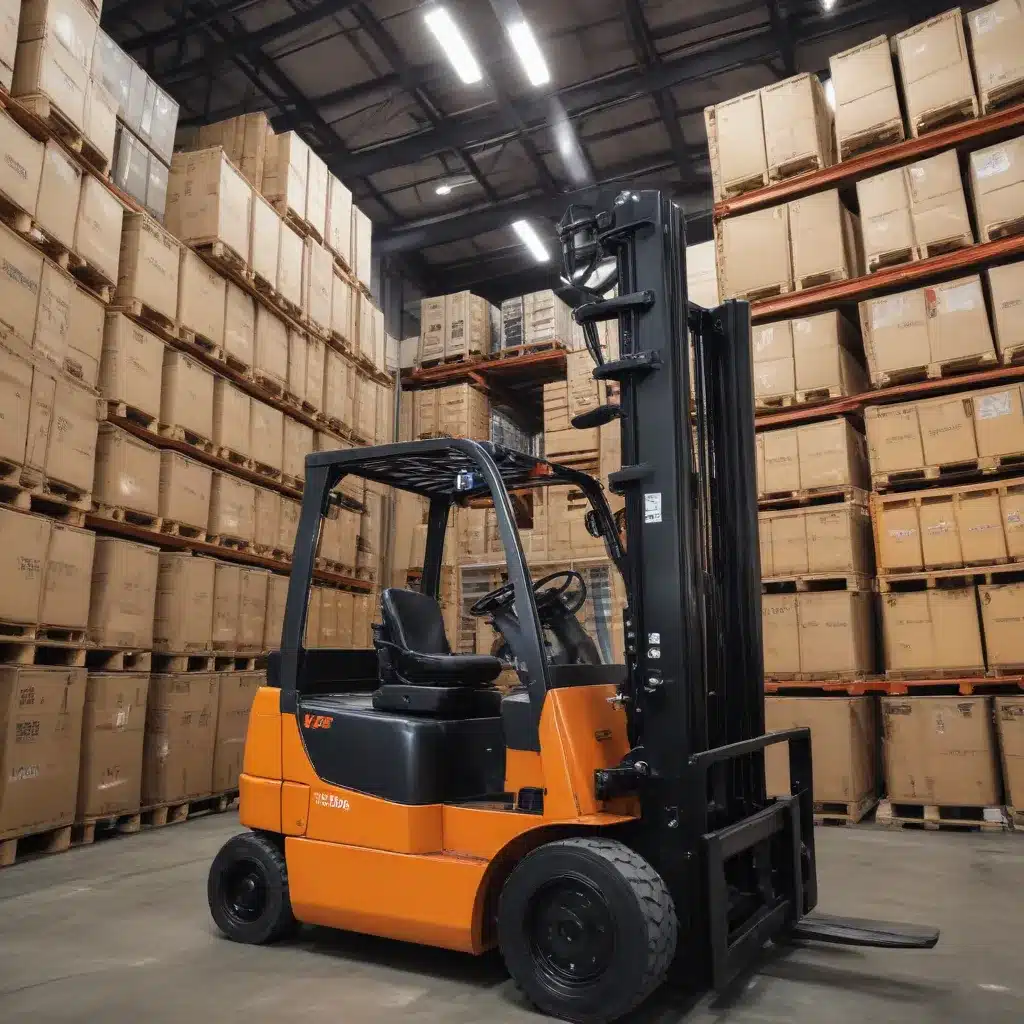
The Importance of Data-Driven Forklift Fleet Management
In the ever-evolving world of warehousing and logistics, the management of forklift fleets has become a critical component of operational efficiency and cost optimization. As businesses strive to meet rising customer demands and navigate increasingly complex supply chains, the ability to make informed decisions about forklift utilization, maintenance, and resource allocation has become paramount.
Fortunately, the rise of data analytics has revolutionized the way forklift fleet management is approached. By harnessing the power of data, warehouse and logistics managers can gain unprecedented insights into their operations, enabling them to make data-driven decisions that drive tangible improvements in productivity, safety, and cost-effectiveness.
Unlocking the Benefits of Data Analytics in Forklift Fleet Management
Data analytics refers to the process of collecting, analyzing, and interpreting data to extract meaningful insights and inform strategic decision-making. In the context of forklift fleet management, this powerful tool provides a wealth of opportunities to optimize operations and enhance overall performance.
Predictive Maintenance and Reduced Downtime
One of the key benefits of data analytics in forklift fleet management is the ability to implement predictive maintenance strategies. By analyzing historical data on equipment usage, maintenance records, and performance metrics, fleet managers can identify patterns and predict when a forklift is likely to require servicing or experience a breakdown.
This proactive approach allows for the scheduling of preventive maintenance, reducing the risk of unexpected downtime and ensuring that forklifts are consistently well-maintained. By minimizing unplanned outages, businesses can maintain a reliable and efficient material handling operation, delivering goods to customers on time and avoiding costly production delays.
Optimized Resource Allocation and Fleet Sizing
Data analytics also plays a crucial role in optimizing the size and allocation of forklift fleets. By analyzing usage patterns, fleet managers can identify underutilized or overused forklifts, ensuring that resources are distributed efficiently across the warehouse or logistics network.
This data-driven approach helps businesses determine the optimal fleet size, striking a balance between having enough forklifts to handle peak demands and avoiding the costs associated with maintaining an excess of idle equipment. Moreover, understanding usage patterns can guide decisions on equipment replacement, enabling fleet managers to time upgrades and replacements based on real-world performance data rather than guesswork.
Improved Safety and Compliance
Forklift safety is a paramount concern in warehouse and logistics operations, and data analytics can play a crucial role in enhancing safety standards. By monitoring operator behavior, equipment condition, and accident reporting, fleet managers can identify training needs, address safety hazards, and ensure compliance with industry regulations.
With data-driven insights, businesses can implement targeted training programs, optimize forklift maintenance schedules, and make proactive investments in safety-enhancing technologies, such as collision avoidance systems or advanced ergonomic features. This not only protects employees from harm but also mitigates the risk of costly incidents and legal liabilities.
Enhanced Operational Efficiency and Cost Savings
Ultimately, the effective use of data analytics in forklift fleet management can lead to significant operational efficiencies and cost savings for businesses. By optimizing resource utilization, reducing downtime, and improving safety, fleet managers can drive down maintenance expenses, fuel costs, and overhead associated with material handling.
Moreover, the insights gleaned from data analysis can help identify opportunities for process improvements, workflow optimization, and strategic investments in new equipment or technologies. This holistic approach to forklift fleet management ensures that businesses can maximize the return on their material handling investments while delivering a superior customer experience.
Implementing Successful Data-Driven Forklift Fleet Management
Harnessing the power of data analytics in forklift fleet management requires a strategic and comprehensive approach. Here are some key steps to consider:
-
Data Collection and Integration: Establish a robust data collection system that captures relevant information from various sources, such as telematics, maintenance records, and operator logs. Ensure seamless integration of these data sources to create a centralized repository for analysis.
-
Data Analysis and Visualization: Invest in data analytics tools and software that can process the collected data, identify trends, and generate actionable insights. Utilize data visualization techniques to present the information in a clear and intuitive manner, enabling fleet managers to make informed decisions.
-
Predictive Modeling and Maintenance Planning: Leverage predictive analytics to forecast equipment failures, optimize maintenance schedules, and allocate resources more effectively. Incorporate machine learning algorithms to enhance the accuracy of these predictions over time.
-
Continuous Improvement and Feedback Loops: Establish a culture of continuous improvement within the organization, where data-driven insights are used to identify and address inefficiencies, implement process enhancements, and validate the effectiveness of implemented strategies.
-
Collaboration and Cross-Functional Alignment: Ensure that data analytics initiatives are aligned with the organization’s overall strategic objectives and that the insights generated are shared and leveraged across different departments, from warehouse operations to finance and procurement.
By embracing data analytics as a core component of forklift fleet management, businesses can unlock a world of opportunities to enhance efficiency, reduce costs, and maintain a competitive edge in the rapidly evolving world of logistics and material handling.
Partnering with HCO Innovations for Forklift Fleet Optimization
HCO Innovations, a leading provider of warehouse optimization and forklift fleet management solutions, offers comprehensive services to help businesses leverage data analytics for informed decision-making.
HCO Innovations’ team of industry experts utilizes advanced cost-tracking software and a collaborative “boots on the ground” approach to provide tailored solutions that enable clients to achieve significant cost reductions and operational efficiency. By partnering with HCO Innovations, businesses can benefit from their expertise in:
- Warehouse evaluation and layout optimization
- Forklift fleet safety assessments
- Predictive maintenance and lifecycle management
- Real-time fleet monitoring and data-driven insights
- Seamless integration of forklift telematics and IoT technologies
Through their data-driven approach, HCO Innovations empowers businesses to make informed decisions, optimize their forklift fleets, and stay ahead of the competition in the ever-evolving world of warehousing and logistics.
To learn more about HCO Innovations’ data analytics-driven forklift fleet management solutions, visit their website at https://www.forkliftreviews.com/.

